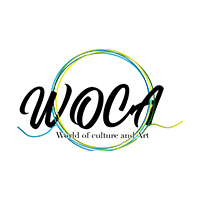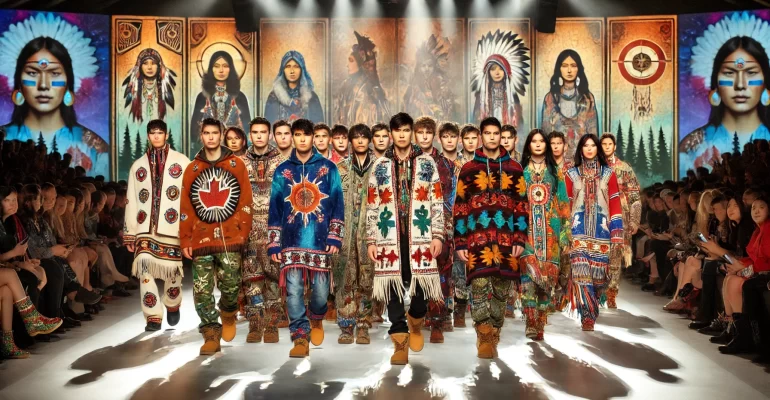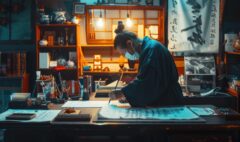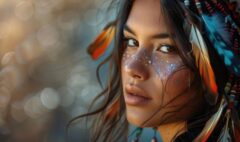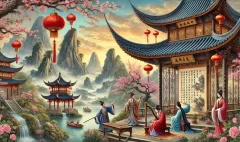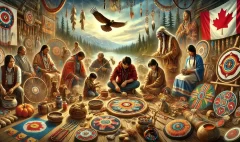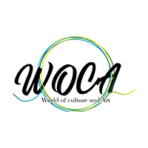Strutting in Style: The Colorful World of Indigenous Fashion in Canada
Strutting in Style: The Colorful World of Indigenous Fashion in Canada
Hey there, fashion enthusiasts and culture lovers! Are you ready to dive into the vibrant, meaningful, and totally stylish world of Indigenous fashion in Canada? Get ready to be wowed by beautiful designs, learn about age-old traditions meeting modern styles, and maybe even find some inspiration for your own wardrobe! Here at WOCA Group, we’re thrilled to take you on this fashionable journey through one of the most exciting areas of Indigenous cultural expression.
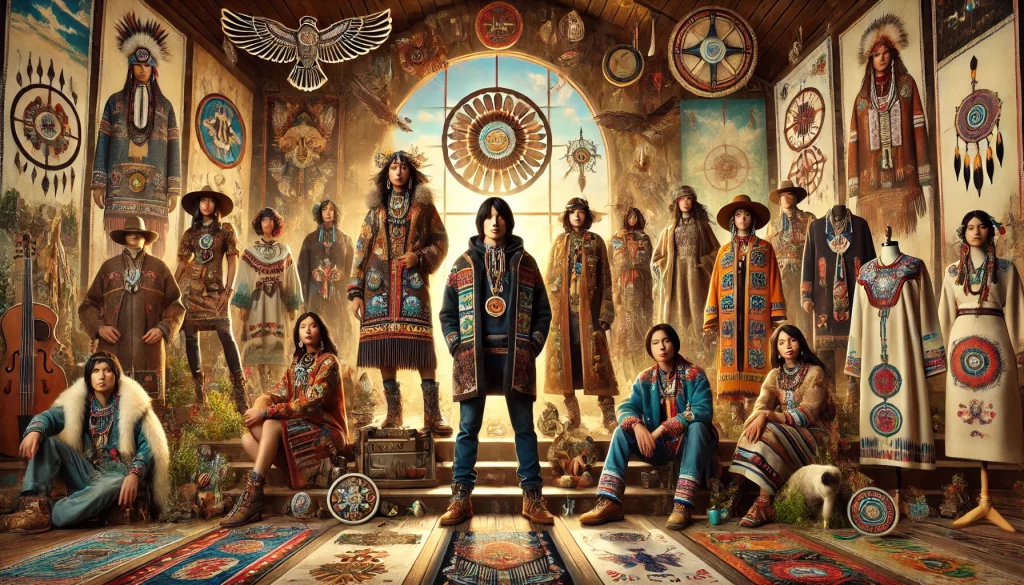
What is Indigenous Fashion in Canada?
Before we strut down this stylish path, let’s talk about what we mean by “Indigenous fashion.”
Indigenous fashion is:
- Clothing and accessories created by Indigenous designers
- Styles that incorporate traditional Indigenous designs, materials, or techniques
- Fashion that often tells stories or expresses cultural identity
- A way of reclaiming and celebrating Indigenous cultural expressions
- A bridge between ancient traditions and contemporary style
“Indigenous fashion is like wearing our stories, our history, and our future all at once,” explains Lisa Threadkeeper, an Indigenous fashion designer. “It’s not just about looking good – it’s about feeling connected to our culture and sharing it with the world.”
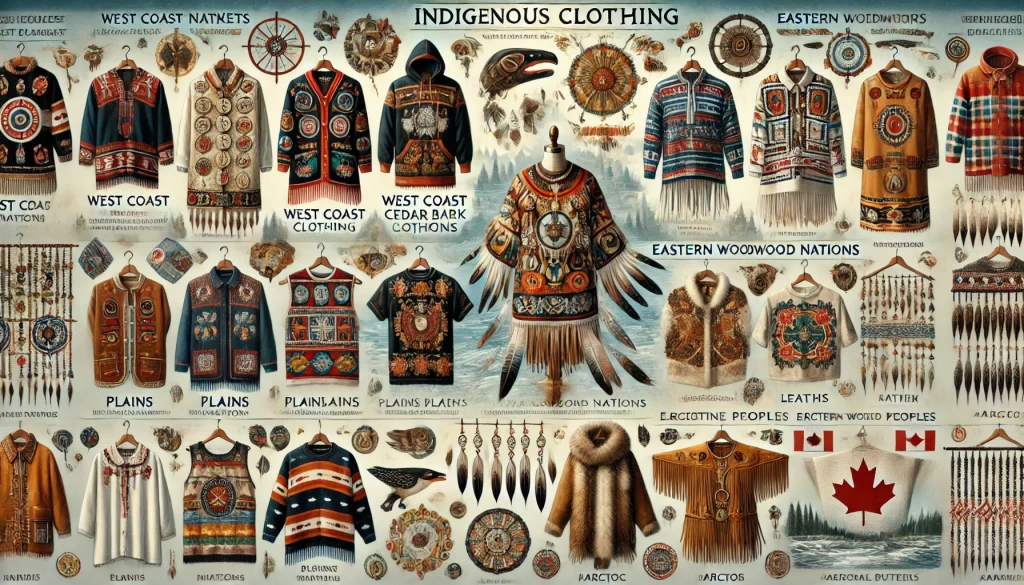
A Stitch in Time: The History of Indigenous Clothing
To understand today’s Indigenous fashion scene, we need to take a quick trip back in time.
- Traditionally, Indigenous peoples in Canada created clothing that was:
– Practical: Suited to the local climate and lifestyle
– Meaningful: Often incorporating symbols and designs with cultural significance
– Handmade: Using materials from the land like animal hides, plant fibers, and porcupine quills
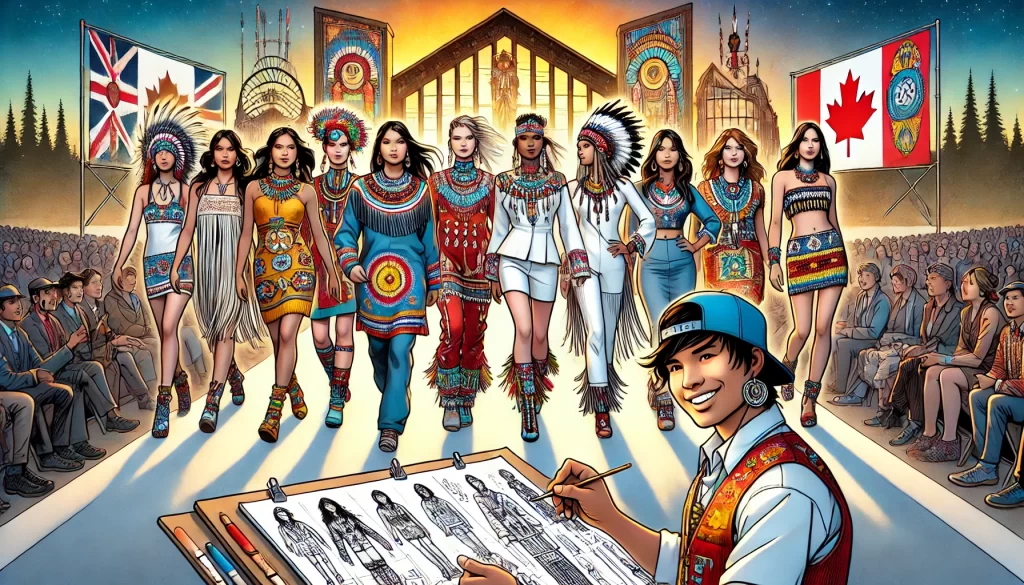
- Different nations had their own distinct styles:
– West Coast nations: Famous for button blankets and woven cedar bark clothing
– Plains nations: Known for elaborate beadwork on leather clothing
– Eastern Woodland nations: Skilled in quillwork and later, floral beadwork designs
– Arctic peoples: Experts in creating warm, waterproof clothing from animal skins
“Our traditional clothing wasn’t just about covering up,” says Elder Mary Historykeeper. “Each piece told a story about who we were, where we came from, and what we believed.”
- European contact brought big changes:
– New materials like wool and cotton became available
– Some traditional practices were lost due to colonial policies
– Indigenous people were often forced to adopt European-style clothing
The Indigenous Fashion Renaissance
In recent decades, there’s been an amazing revival of Indigenous fashion. Designers are reclaiming their heritage and creating stunning, contemporary looks that honor traditional styles. Key moments in this fashion renaissance:
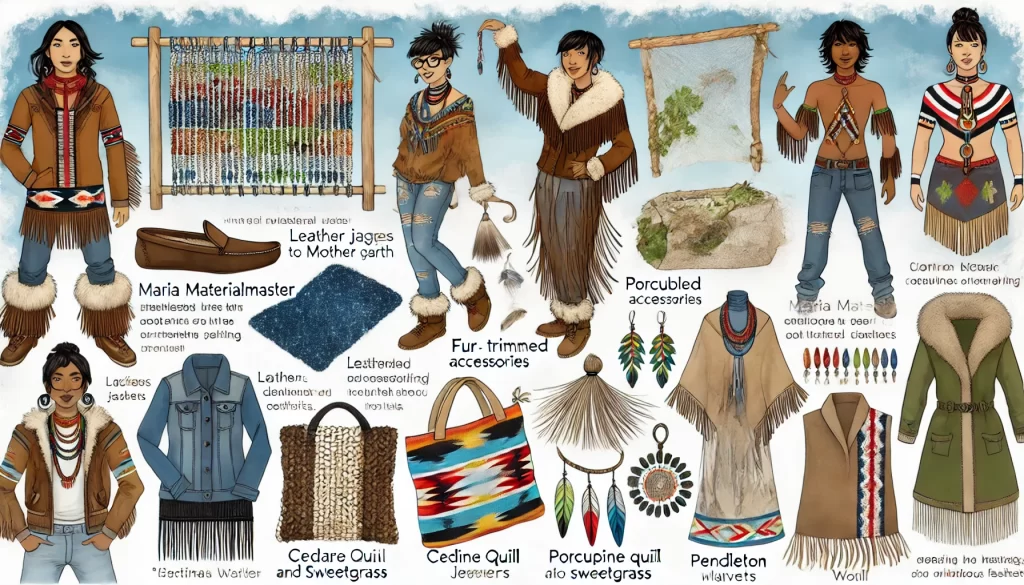
– 1960s-70s: Growing pride in Indigenous identity led to a resurgence of traditional styles
– 1980s-90s: Indigenous designers began gaining recognition in mainstream fashion
– 2000s-present: Explosion of Indigenous fashion brands, runway shows, and increased visibility
“It’s like we’re picking up threads from the past and weaving them into something new and exciting,” says Tom Trendmaker, a young Indigenous designer. “We’re showing the world that our culture is alive, evolving, and seriously stylish!”
Materials in Indigenous Fashion in Canada: From Mother Earth to Catwalk
One of the coolest things about Indigenous fashion is how it often uses traditional materials in new ways. Let’s check out some of these amazing materials:
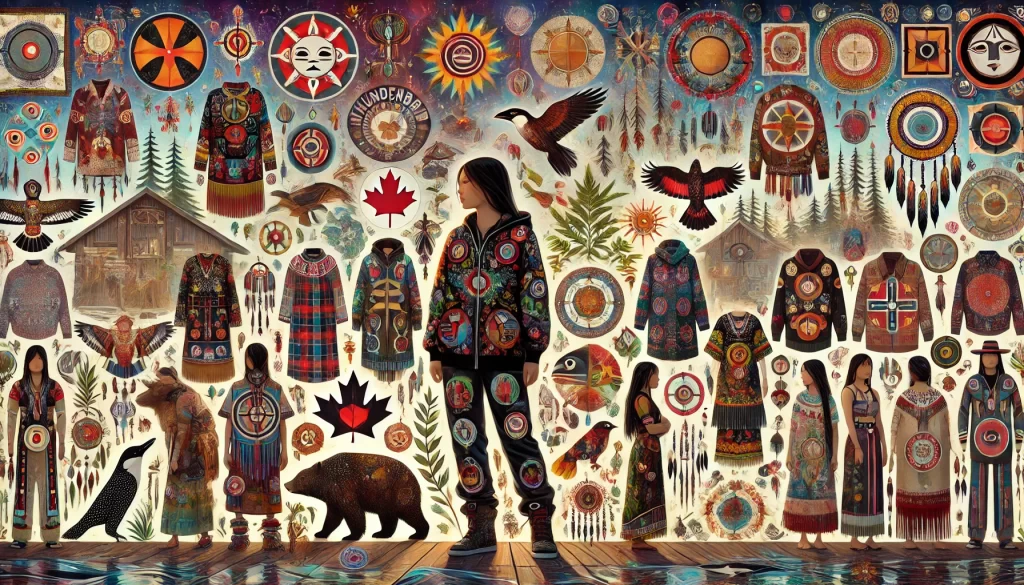
- Leather and Hide: From sleek jackets to fringed bags, animal hide is a versatile favorite.
- Fur: Used traditionally for warmth, now often seen as trim or in accessories.
- Beads: Glass beads have been used since the fur trade era, creating stunning designs.
- Porcupine Quills: An ancient decoration technique making a comeback in modern accessories.
- Plant Fibers: Materials like cedar bark or sweetgrass are woven into contemporary pieces.
- Wool: Adopted after European contact, now used in beautiful Pendleton-style blankets and coats.
- Modern Fabrics: Many designers blend traditional elements with contemporary materials like silk or denim.
“Using traditional materials connects us to the land and our ancestors,” explains Maria Materialmaster, an Indigenous weaver. “But we’re not stuck in the past – we’re finding new ways to use these materials that speak to today’s fashion-conscious crowd.”
Designs that Speak: Symbols and Patterns in Indigenous Fashion
Indigenous fashion isn’t just about looking good – it’s about saying something. Many designs incorporate traditional symbols and patterns that carry deep meaning.
Common elements you might see:
– Animal motifs: Like the thunderbird, bear, or whale, often representing clan or personal totems
– Floral patterns: Especially in Métis and Woodland styles, representing connection to the land
– Geometric shapes: Common in many nations’ designs, often with spiritual or cultural significance
– Celestial symbols: Suns, moons, and stars feature in many traditional designs
“When I wear clothing with traditional designs, I feel wrapped in my culture,” says Sarah Proudwearer, an Indigenous youth. “It’s like carrying a piece of my heritage with me wherever I go.” But it’s not all ancient symbols. Many designers are creating new motifs that speak to contemporary Indigenous experiences and issues.
From Head to Toe: Indigenous Fashion Pieces
Indigenous fashion isn’t limited to one type of clothing. Designers are creating amazing pieces for every part of your wardrobe:
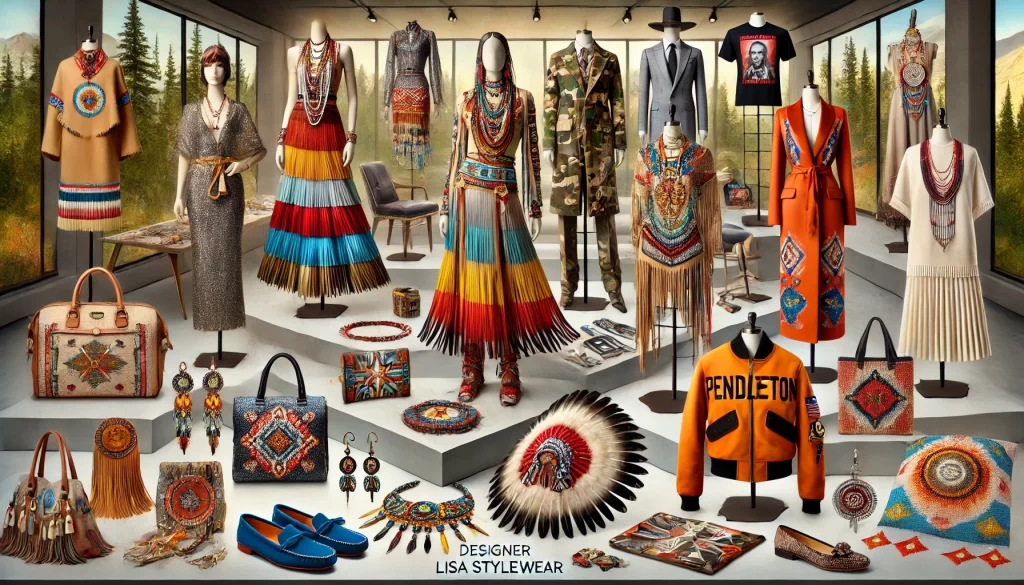
- Ribbon Skirts: Colorful, often adorned with ribbons and worn for both everyday and ceremonial occasions
- Beaded Jewelry: From elegant earrings to bold statement necklaces
- Modern Moccasins: Traditional footwear reimagined for today’s fashion scene
- Pendleton-style Jackets: Wool coats featuring bold Indigenous-inspired patterns
- Silk Scarves: Traditional designs printed on luxurious modern fabrics
- Graphic Tees: Spreading messages of Indigenous pride and activism through casual wear
- High-end Gowns: Stunning formal wear incorporating traditional elements
- Handbags and Accessories: From beaded clutches to leather totes with Indigenous designs
“Fashion is a way for us to wear our identity proudly,” says designer Lisa Stylewear. “Whether it’s a beaded pair of earrings or a full regalia-inspired gown, each piece is a statement of who we are.”
Meet the Designers: Indigenous Fashion Trailblazers
Let’s meet some of the amazing Indigenous designers who are making waves in the fashion world:
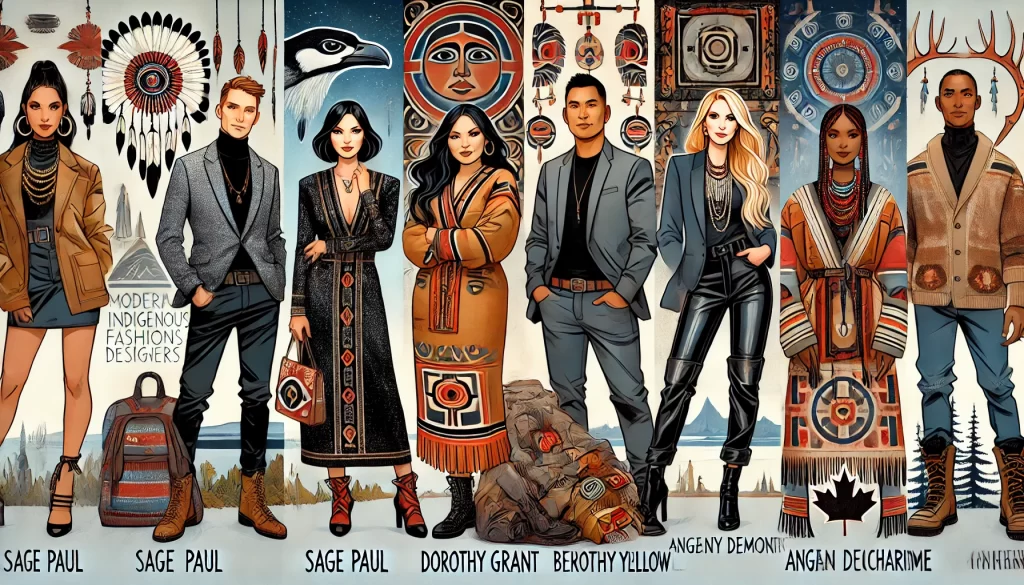
- Sage Paul: A Dene designer known for her contemporary takes on traditional designs. She’s also the founder of Indigenous Fashion Week Toronto.
- Dorothy Grant: A Haida designer who brings traditional Haida art to high fashion, even dressing celebrities for the red carpet.
- Bethany Yellowtail: A Crow/Northern Cheyenne designer whose brand B.Yellowtail celebrates Indigenous culture through fashion.
- Angela DeMontigny: A Cree/Métis designer creating luxurious leather and fur pieces with an Indigenous twist.
- Evan Ducharme: A Métis designer known for his gender-neutral, sustainable fashion with Indigenous influences.
“We’re not just making clothes,” says Sage Paul. “We’re creating opportunities for Indigenous people in the fashion industry, preserving our cultural knowledge, and sharing our stories with the world.”
More Than Fashion: The Impact of Indigenous Design
The rise of Indigenous fashion in Canada is about more than just cool clothes. It’s having a big impact in many ways:
- Cultural Pride: Wearing Indigenous designs helps many people feel connected to their heritage.
- Education: Fashion is teaching both Indigenous and non-Indigenous people about Indigenous cultures.
- Economic Opportunities: The Indigenous fashion industry is creating jobs and business opportunities.
- Representation: Seeing Indigenous designs in mainstream fashion helps break down stereotypes.
- Sustainability: Many Indigenous designers prioritize eco-friendly practices, influencing the broader fashion world.
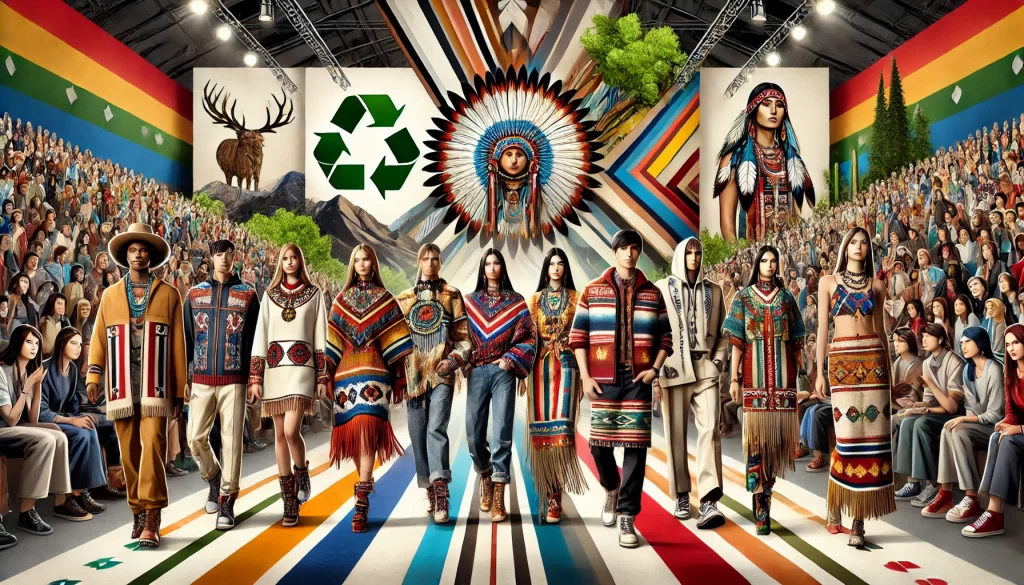
“When I see our designs on runways and in magazines, I feel like our voices are finally being heard,” says Tom Visibilitychamp, an Indigenous model. “It’s like fashion is helping to write a new chapter in our history.”
Challenges and Innovations of Indigenous Fashion: Navigating the Fashion World
While Indigenous fashion is thriving, it also faces some challenges:
- Cultural Appropriation: Non-Indigenous companies sometimes copy Indigenous designs without permission or understanding.
- Access to Resources: Some designers struggle to access the materials or funding needed to grow their brands.
- Breaking into Mainstream Markets: It can be hard to gain recognition in the broader fashion industry.
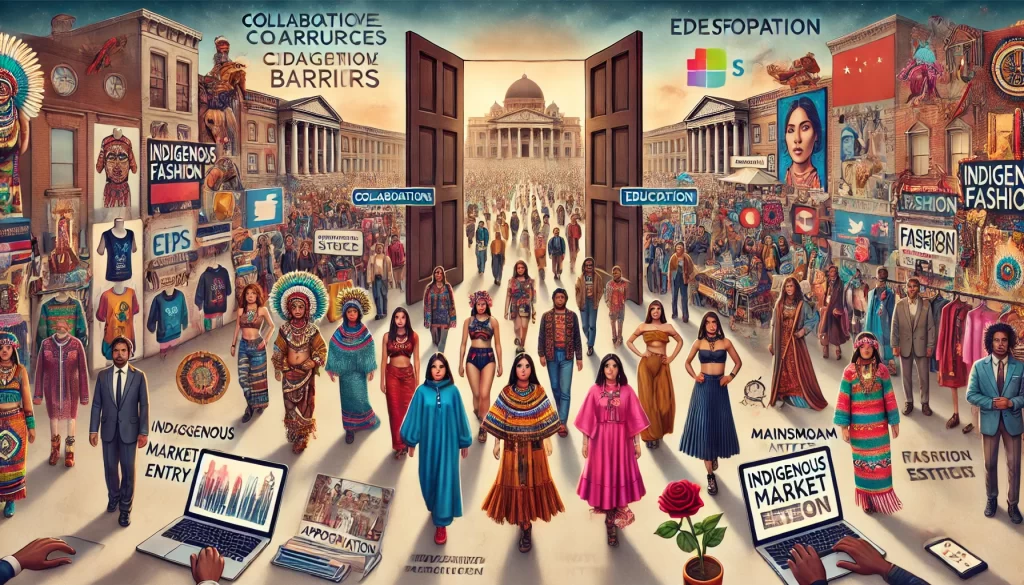
But Indigenous designers are finding innovative solutions:
- Collaboration: Working with larger brands to create authentic Indigenous-designed collections.
- Digital Platforms: Using social media and online stores to reach customers directly.
- Fashion Weeks: Creating Indigenous-focused fashion events to showcase their work.
- Education: Teaching consumers about the meaning behind their designs to prevent appropriation.
“Every challenge is an opportunity to educate and innovate,” says Maria Fashionfuture, an Indigenous fashion business consultant. “We’re not just adapting to the fashion world – we’re transforming it.”
WOCA Group’s Indigenous Fashion Showcase: Celebrate in Style!
Here at WOCA Group, we’re excited to support and celebrate Indigenous fashion. That’s why we’re hosting our first annual Indigenous Fashion Showcase!
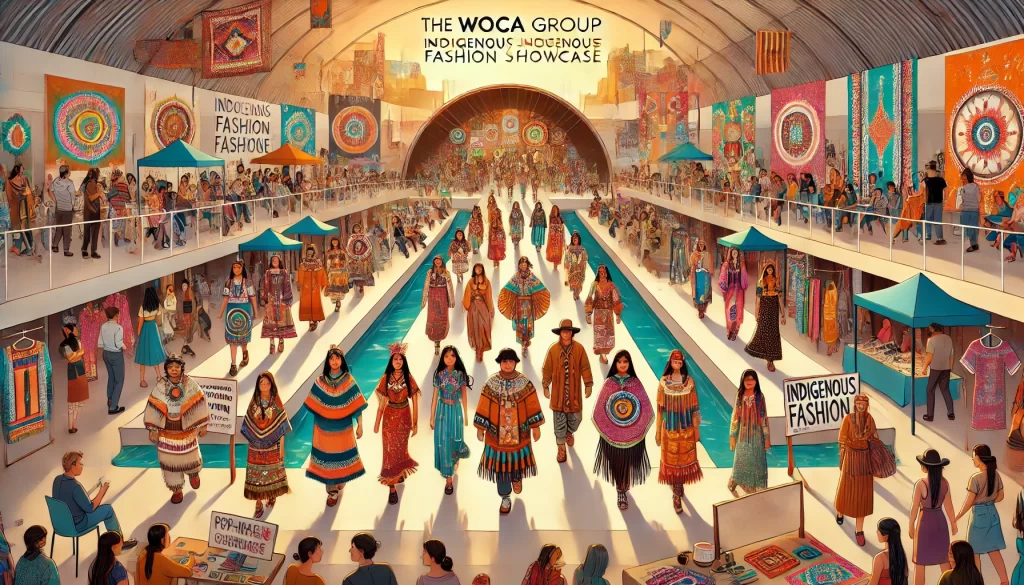
What’s the Indigenous Fashion Showcase? It’s a community event that:
– Features local Indigenous designers
– Includes a runway show with Indigenous models
– Offers pop-up shops where you can purchase authentic Indigenous fashion pieces
– Provides workshops on traditional craft techniques used in fashion
– Creates opportunities for Indigenous youth interested in fashion careers
“Our Fashion Showcase is like a big, stylish party celebrating Indigenous creativity,” says Lisa Eventplanner, WOCA Group’s coordinator. “It’s a chance to see amazing designs, meet talented artists, and maybe even update your wardrobe with some meaningful, beautiful pieces.”
Step Into Style: Incorporating Indigenous Fashion in Your Life
Inspired to add some Indigenous-designed pieces to your wardrobe? Here are some tips:
- Start Small: Begin with accessories like jewelry or scarves.
- Learn the Stories: When you buy a piece, ask about its meaning or the inspiration behind it.
- Mix and Match: Blend Indigenous-designed pieces with your existing wardrobe.
- Attend Events: Check out Indigenous fashion shows or markets to see a wide range of styles.
- Follow Indigenous Designers: Stay up-to-date with their latest creations on social media.
“Fashion is for everyone,” encourages designer Tom Inclusivestyle. “Whether you’re Indigenous or not, wearing these designs can be a beautiful way to appreciate and support Indigenous cultures.”
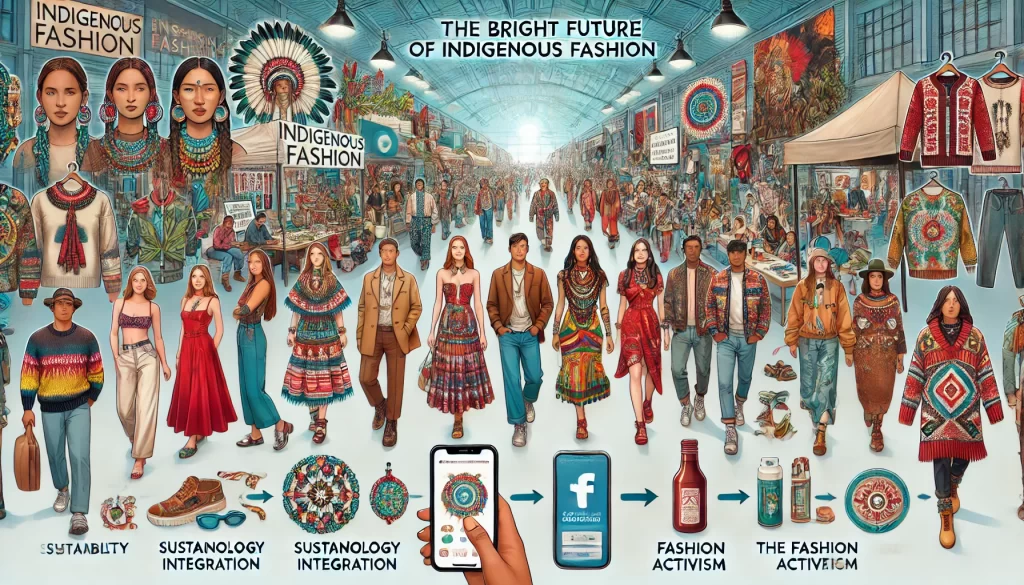
The Future is Bright (and Stylish!): What’s Next for Indigenous Fashion
As we wrap up our fashionable journey, let’s look at what might be coming next in the world of Indigenous fashion:
- Increased Global Recognition: Indigenous designers are gaining fans worldwide.
- Sustainability Leadership: Traditional respect for the land is influencing eco-friendly fashion.
- Tech Meets Tradition: Some designers are experimenting with blending traditional designs and modern technology.
- Fashion as Activism: Using clothing to raise awareness about Indigenous issues.
- Cross-Cultural Collaborations: Indigenous designers working with artists from other cultures.
“The future of Indigenous fashion is as diverse and dynamic as our cultures,” says young designer Lisa Futurefashion. “We’re honoring our past, celebrating our present, and designing our future – and it’s going to be beautiful!”
A Final Fashionable Thought
As we come to the end of our stylish exploration of Indigenous fashion in Canada, let’s remember what we’ve discovered:
- Indigenous fashion blends ancient traditions with contemporary style.
- It’s about more than just clothing – it’s a way of expressing culture and identity.
- Traditional materials and symbols play a big role in modern Indigenous designs.
- Indigenous designers are making a mark in all areas of fashion, from streetwear to haute couture.
- This fashion renaissance is having positive impacts beyond just the style world.
- There are respectful ways for everyone to appreciate and enjoy Indigenous fashion.
- Events like WOCA Group‘s Fashion Showcase are great ways to experience Indigenous fashion firsthand!
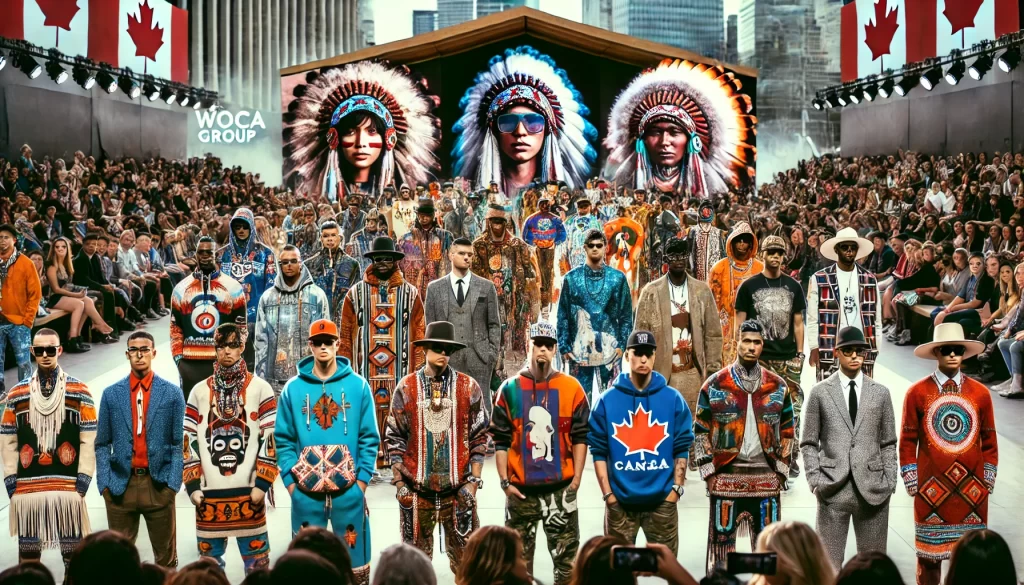
Indigenous fashion is like a beautifully beaded accessory for Canada’s cultural landscape. It adds color, tells stories, and makes everything around it more interesting and beautiful. The next time you see an Indigenous-designed piece, whether it’s on a runway or in a local shop, remember that you’re not just looking at a piece of clothing. You’re seeing a thread in the ongoing story of Indigenous peoples – a story of resilience, creativity, and pride that’s being worn for all to see.
Now it’s your turn! Do you have a favorite Indigenous designer or piece of Indigenous-designed clothing? What aspects of Indigenous fashion speak to you the most? Share your thoughts or experiences in the comments below. And don’t forget to check out WOCA Group’s Indigenous Fashion Showcase – you might just find your new favorite outfit! Let’s keep celebrating the beauty and meaning of Indigenous fashion together, one stylish step at a time!
